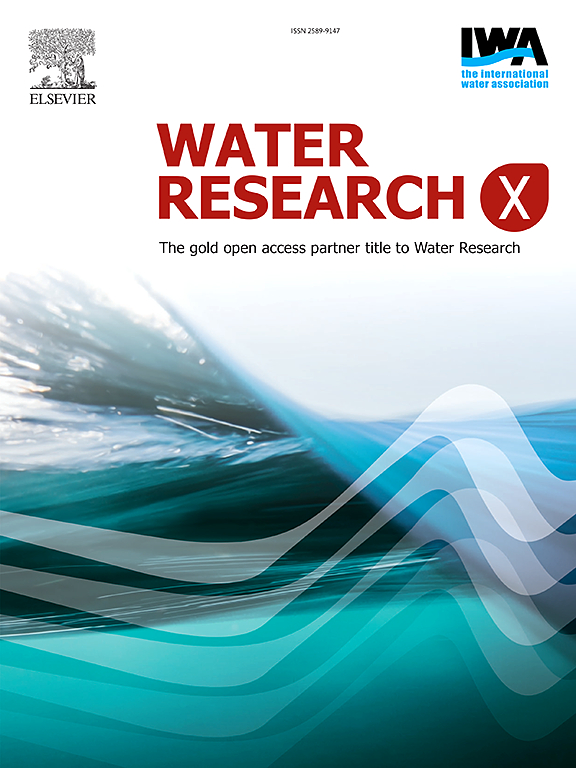comammox 过程对自养脱氮膜式通气生物膜反应器的影响
IF 7.2
2区 环境科学与生态学
Q1 ENGINEERING, ENVIRONMENTAL
引用次数: 0
摘要
本文章由计算机程序翻译,如有差异,请以英文原文为准。

Impact of comammox process on membrane-aerated biofilm reactor for autotrophic nitrogen removal
This study compared the simulation results of the side-stream membrane-aerated biofilm reactor (MABR) in terms of total nitrogen (TN) removal and N2O production obtained by the conventional comammox-exclusive biological nitrogen removal (BNR) model and the novel BNR model with comammox-related model structures/parameters. Even though the conventional comammox-exclusive MABR obtained >85 % TN removal over a wide range of substrate conditions and achieved up to ∼92.0 % TN removal, it suffered from 0.90 %-4.80 % N2O production. Comparatively, despite the significantly lower N2O production (0.01 %-0.06 %), due to the undesired full nitrification of comammox bacteria, the novel comammox-inclusive MABR failed to provide adequate nitrite for anammox bacteria under exceeding substrate conditions and only obtained the maximum ∼88.0 % TN removal through comammox bacteria-based partial nitritation/anammox. Both MABRs should be operated at a moderate hydraulic retention time (e.g., 4.0 d) with a sufficient biofilm thickness (e.g., ≥300 μm) to attain efficient TN removal and reduced N2O production.
求助全文
通过发布文献求助,成功后即可免费获取论文全文。
去求助
来源期刊

Water Research X
Environmental Science-Water Science and Technology
CiteScore
12.30
自引率
1.30%
发文量
19
期刊介绍:
Water Research X is a sister journal of Water Research, which follows a Gold Open Access model. It focuses on publishing concise, letter-style research papers, visionary perspectives and editorials, as well as mini-reviews on emerging topics. The Journal invites contributions from researchers worldwide on various aspects of the science and technology related to the human impact on the water cycle, water quality, and its global management.
 求助内容:
求助内容: 应助结果提醒方式:
应助结果提醒方式:


